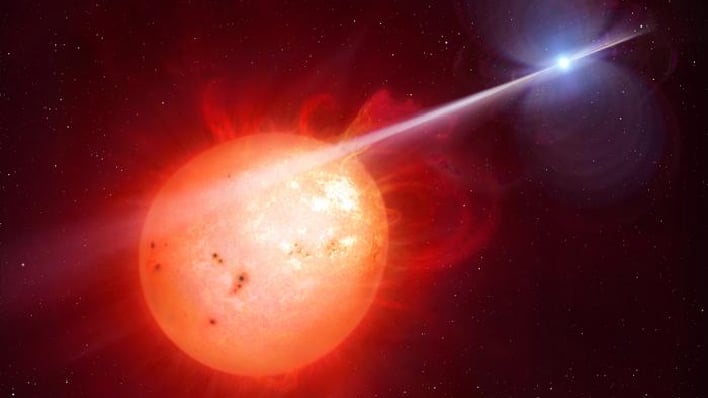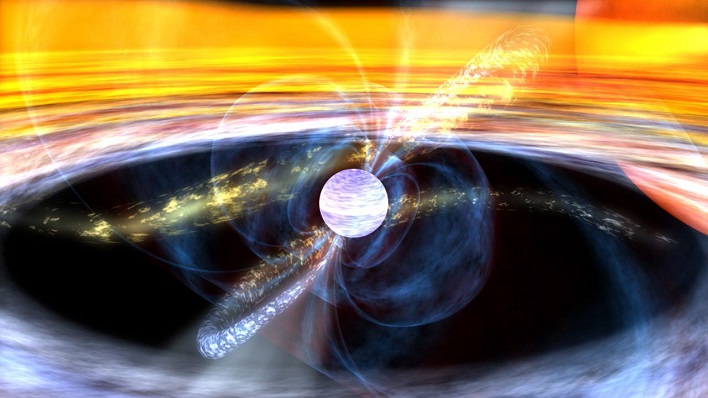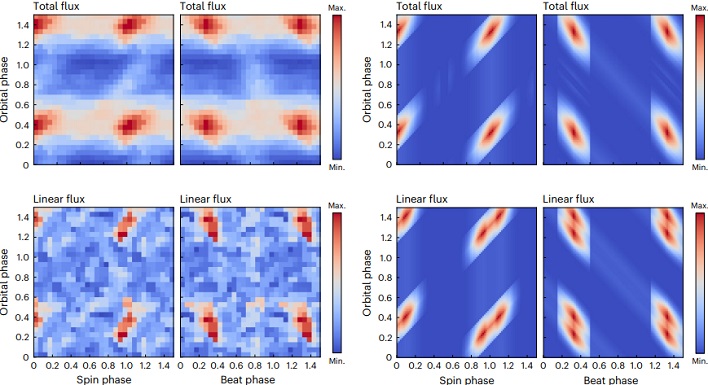Exciting Discovery Of A Rare White Dwarf Pulsar Holds The Key To Star Evolution

Researchers with the University of Warwick have released a new study that shows a white dwarf pulsar, known as J1912-4410, that includes a white dwarf star that is rapidly spinning and lashing out at its neighbor, a red dwarf star, with powerful beams of electrical particles and radiation. The only other white dwarf pulsar known to have been found was the discovery of AR Scorpii in 2016.
"White dwarfs are the most common stellar fossils," remarked University of Warwick astronomer Ingrid Pelisoli and her colleagues in the study published in the journal Nature Astronomy. "When in binaries, they make up the dominant form of compact object binary with the Milky Way Galaxy and can offer insight into different aspects of binary formation and evolution."

The newly found white dwarf pulsar lies 773 light-years from Earth, and is spinning at a rate 300 times faster than our home planet. The white dwarf is similar in size to Earth, but has a mass that is at least as large as the Sun. This translates into a teaspoon of white dwarf material equaling around 15 tons. Being white dwarfs begin their lives at extraordinarily hot temperatures before cooling down, the low temperatures of J1912-4410 indicate an advanced age.

In the image above, the four on the left indicate the total intensity (upper two images) and linear polarization (lower two images). The images on the right show the model of simulations of synchrotron emission from one emission located near the magnetic pole of a spinning wheel dwarf. This shows how the spin and beat pulse profiles change with the orbital phase.
The team said there were other predictions made by the dynamo model and were confirmed by the discovery of J1912-4410. Some of those predictions included the white dwarf being cooler than 13,000 K, spinning on its axis once every five minutes, and the gravitational pull of the white dwarf having a strong effect on its companion red dwarf star.
"This research is an excellent demonstration that science works," exclaimed Dr. Pelisoli, "we can make predictions and put them to test, and that is how any science progresses."

